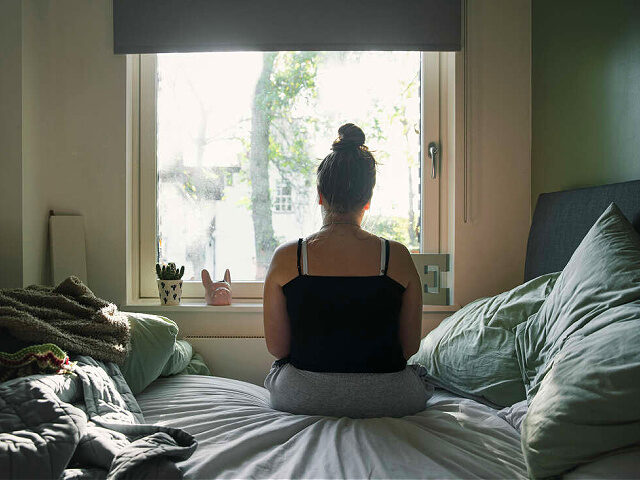Nearly 30 percent of U.S. adults say they have been diagnosed with depression at some point in their lifetime, and 17.8 percent say they currently have or are being treated for depression, a Gallup poll found.
“Both rates are the highest recorded by Gallup since it began measuring depression using the current form of data collection in 2015,” according to the survey report.
The survey was conducted with 5,167 U.S. adults between February 21-28, 2023. Respondents were asked, “Has a doctor or nurse ever told you that you have depression?” and “Do you currently have or are you currently being treated for depression?”
Depression rates in the U.S. have hit new highs, with 29.0% of adults reporting a lifetime diagnosis and 17.8% currently having depression or receiving treatment, according to a new survey by Gallup. https://t.co/56RsalYT3F
— GallupNews (@GallupNews) May 17, 2023
Rates of depression among women and young adults, as well as black and Hispanic adults, are rising fastest, the survey report states. Nearly 37 percent of women report having been diagnosed with depression at some point in their lifetime compared to 20.4 percent of men. Female depression rates have also risen “at nearly twice the rate of men since 2017,” according to Gallup.
Young adults ages 18 to 29 (34.3 percent) and adults ages 30 to 44 (34.9 percent) also “have significantly greater depression diagnosis rates in their lifetime than those older than 44.”
“Women (23.8 percent) and adults aged 18 to 29 (24.6 percent) also have the highest rates of current depression or treatment for depression. These two groups (up 6.2 and 11.6 percentage points, respectively), as well as adults aged 30 to 44, have the fastest-rising rates compared with 2017 estimates,” according to the report.
The survey found that lifetime depression rates have also quickly increased among black and Hispanic adults and have surpassed those of white respondents.
In the “implications” section of the survey report, Gallup notes that “alarming rates of depression are not unique to the U.S.”
“Globally, nearly four in 10 adults aged 15 and older either endure significant depression or anxiety themselves or have a close friend or family member who suffers from it,” according to the report.
The pollster also observed that while clinical depression was on the rise prior to the coronavirus pandemic, rates have “jumped notably in its wake.”
“Social isolation, loneliness, fear of infection, psychological exhaustion (particularly among front-line responders such as healthcare workers), elevated substance abuse and disruptions in mental health services have all likely played a role,” according to the report.
Gallup surmised that elevated daily loneliness during the pandemic — largely caused by government shutdowns and widespread fear campaigns — has “likely played a substantive role in increasing the rates of the longer-term, chronic nature of depression.”
Seventeen percent of U.S. adults say they experienced significant loneliness “yesterday,” which is an estimated 44 million people, according to Gallup.
“Young adults, in turn, are more likely to be single and to report loneliness, particularly so during the pandemic. They also need more social time to boost their mood than older adults, something directly impacted by COVID-19,” according to the report. “Daily experiences of sadness, worry and anger — all of which are closely related to depression — are highest for those under 30 and those with lower income levels.”
Flashback: Trump: “Sleepy Joe Rejects the Scientific Approach in Favor of Locking All Americans in Their Basements”
White House

COMMENTS
Please let us know if you're having issues with commenting.